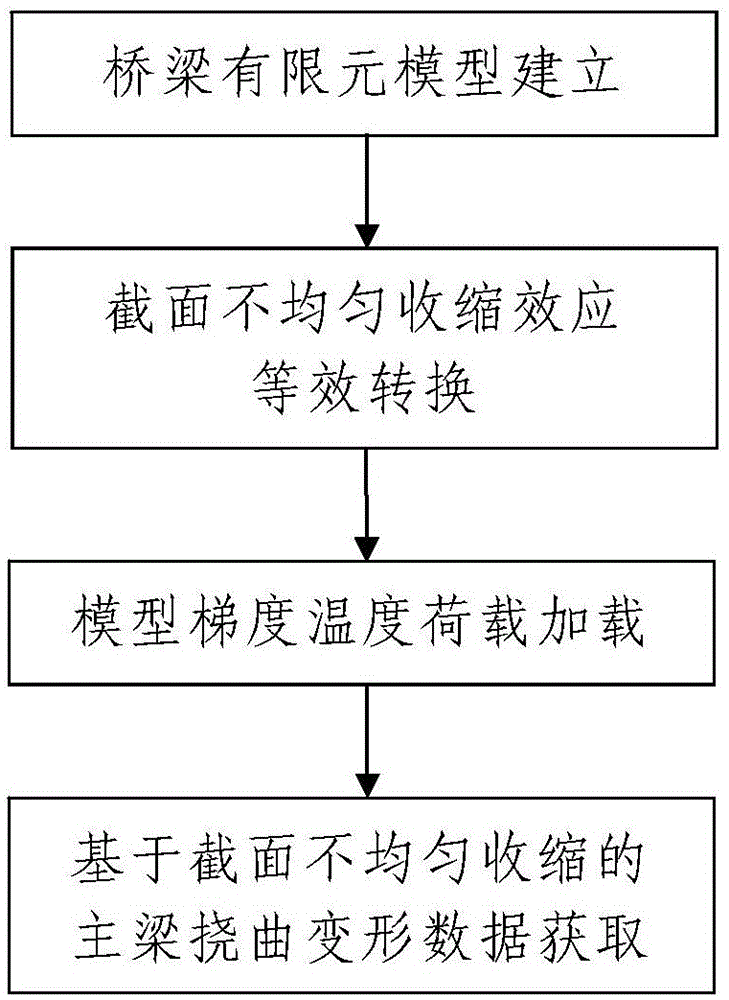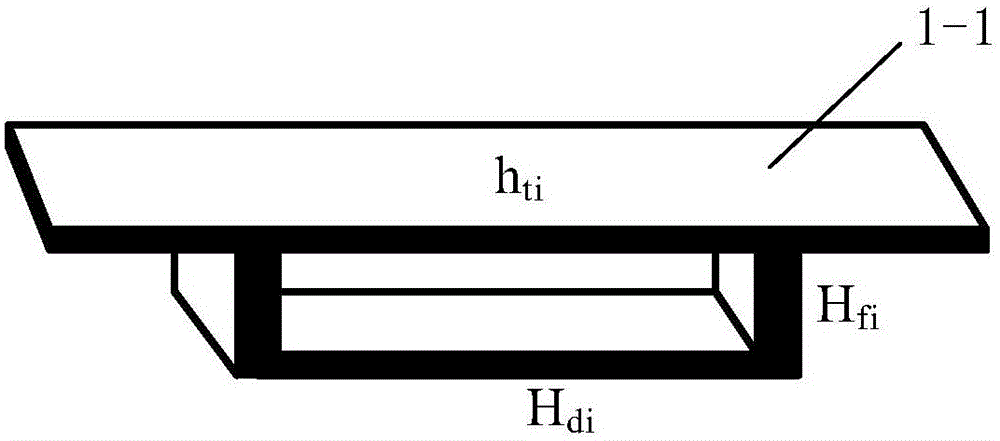Section uneven shrinkage effect-based girder flexural deformation predicting method
A technology of uniform shrinkage and deflection deformation, applied in special data processing applications, instruments, electrical digital data processing, etc., can solve problems such as no clear implementation method for finite element prediction analysis, and difficulty in considering the influence of uneven shrinkage of box girder sections.
- Summary
- Abstract
- Description
- Claims
- Application Information
AI Technical Summary
Problems solved by technology
Method used
Image
Examples
Embodiment Construction
[0060] Such as figure 1 A method for predicting the deflection deformation of the main beam based on the effect of uneven shrinkage of the section shown includes the following steps:
[0061] Step 1. Establishment of the finite element model of the bridge: through the data processing equipment and the finite element analysis software, the spatial structure simulation model of the main girder 1 to be analyzed is established.
[0062]The main beam 1 to be analyzed is a prestressed concrete box girder (i.e. PC box girder) and it is a variable-section beam, and the main beam 1 to be analyzed is divided into N beam units 1- 1. Wherein, N is a positive integer and N≥10.
[0063] Step 2. Equivalent transformation of section uneven shrinkage effect: perform equivalent transformation on the section uneven shrinkage effect of each beam unit 1-1 in the main beam 1 to be analyzed at time t, and obtain the corresponding equivalent of each beam unit 1-1 Gradient temperature; where, t tim...
PUM
 Login to View More
Login to View More Abstract
Description
Claims
Application Information
 Login to View More
Login to View More - R&D
- Intellectual Property
- Life Sciences
- Materials
- Tech Scout
- Unparalleled Data Quality
- Higher Quality Content
- 60% Fewer Hallucinations
Browse by: Latest US Patents, China's latest patents, Technical Efficacy Thesaurus, Application Domain, Technology Topic, Popular Technical Reports.
© 2025 PatSnap. All rights reserved.Legal|Privacy policy|Modern Slavery Act Transparency Statement|Sitemap|About US| Contact US: help@patsnap.com



